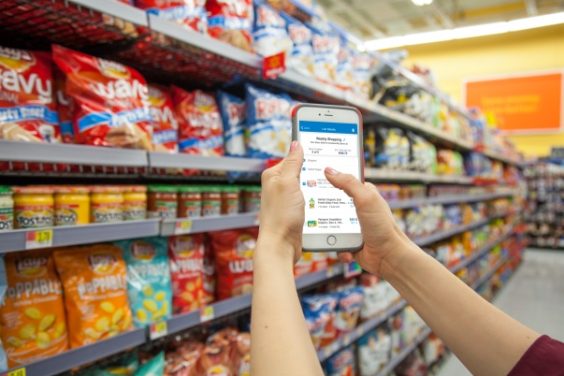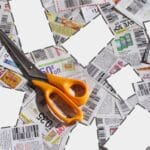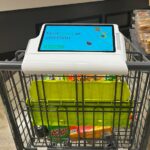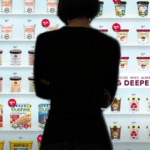
Some grocery stores’ apps will let you make a shopping list, then tell you in what aisle you can find the items you’re planning to buy. Handy, perhaps, though not exactly life-changing. But what if there was an app that could automatically alert you as you approach each item while walking down the aisles, pointing out precisely where it is, wherever you choose to shop?
There’d be no more wandering the aisles looking for your groceries – you could just stroll through the store, and your phone would do all the work telling you exactly where to find everything.
That’s the idea described in a newly-published patent application filed by IBM, entitled “Locating Items From a Personal List”.
“Individuals waste a significant amount of time in stores trying to locate items from a personal shopping list,” the patent application explains. In some cases, “a person may waste time searching for products that are sold out.” In other cases, “even though a product is on a person’s personal shopping list, they may accidentally skip over the item or forget to look for it.”
So IBM’s proposed system would use visual recognition software, and your phone’s cameras, to match written items on your list with physical items in the grocery store. It could also suggest items you regularly buy, let you know about available coupons, and warn you when something is out of stock.
First, you would use the proposed app to make a shopping list. Each item on your list will be associated with a product image that the app will recognize once you enter the store. At that time, the app will use the front and back cameras on your phone to scan items on the shelves as you walk down the aisles. And just so you don’t have to hold your phone out as you walk along, the application proposes that shopping carts could “include a mounting bracket” for your phone, so “the front facing camera points to the left and the rear camera points to the right”.
When the app detects an item on your shopping list, it will send you an alert and display an image highlighting the location of the item on the shelf. An advanced version of the app might even “enter an augmented reality mode to highlight or direct the user’s attention to the identified product.”
And just so you don’t end up overpaying for that item, the app can “notify a user if there is a coupon for an item, or if the store is having a sale on an item”.
Parts of IBM’s invention have been proposed before, but store-mapping and item-locating systems are still far from commonplace. With great fanfare, Walgreens once announced a new system that would “allow users to search and navigate to specific products in a 3D augmented reality experience inside the store”. But that was five years ago – so why aren’t all Walgreens shoppers using this technology now?
In the early part of this decade, retailers seemed dazzled by beacons – wireless devices that can communicate with nearby smartphones using Bluetooth signals. Some retailers placed beacons throughout the store, so they could ping your phone with product information and deals as you approached an item.
But that requires a lot of hardware, and it’s often not precise enough to zero in on a specific item on a specific shelf. Once Amazon showed that cameras could be used successfully, and much more precisely, to identify items in its Amazon Go stores, visual recognition software seemed better able to do what beacons once promised.
And that’s what makes IBM’s proposed store-mapping system stand out. It won’t just direct you to the general area where an item is supposed to be. It will see the item on the shelf – or see when it isn’t there. If the app sees an empty shelf where an item on a shopper’s list should be, it can “let them know that the product appears to be sold out” and “may suggest the same product in a different size or alternative similar products”.
Other features of the proposed app include the ability to “recognize generic products written on a shopping list (e.g., ketchup) and notify a user when any brand of that product is recognized.” It can get to know your shopping habits, so “a user can be notified if they pass by an item that is not on their list, but that the application expects that they may want (e.g., a user buys milk once a week, but happened to forget to put it on their list once.)” And a version of the app could even be used by employees, to let them know when an item is out of stock or In the wrong place.
This effort to improve the in-store shopping experience comes as an increasing number of shoppers are staying home and buying their groceries online. Having an app tell you where to find all of the items on your list may not be quite as convenient as having those items delivered to your door. But for those who like to do their shopping in person, but don’t like to waste time doing so – it could prove to be the next best thing.
Image source: Walmart











Pingback: APP finds your groceries as you shop - deranged.mederanged.me